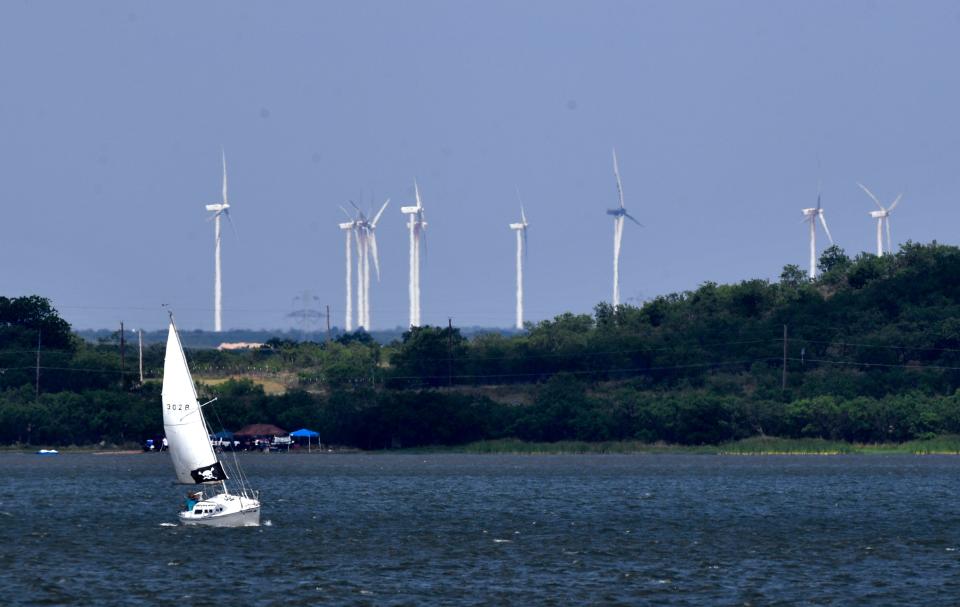Lake levels low in West Texas but not as low as out west
According to recent news reports, the western United States is enduring the worst drought in 1,200 years.
The Colorado River basin, which has some of the largest reservoirs in the country, has been especially hard hit. The water level of Lake Mead, the largest man-made lake, is 185 feet below the full level.
Folks in the Big Country can be thankful that things aren’t that bad around here. But they’re not exactly great, either. While the recent rains may have “greened” things up, they didn’t add much water to the local lakes. It seems the water simply soaked into the ground with little to no runoff.
What a difference a year makes.
One year ago, Lake Fort Phantom Hill was 97% full. And only weeks before that, water was flowing over the spillway 2 feet deep. The upper reaches of the lake near Seabee Park were so flooded that one easily could kayak all the way up Elm Creek to the bridge at FM 600, or Cedar Creek to the bridge at FM 3308.

No more.
As of Sept. 25, Lake Fort Phantom was only 68% full and 6.5 feet below the spillway. Some of the boat ramps almost are unusable, with the water level below the end of the ramp. And if you plan on swimming or wading at Johnson Park, be prepared to walk through a thicket of over-your-head tall weeds growing where there was once 3 or 4 feet of water.
Lake Abilene at Abilene State Park is even worse.
At only 41% capacity and 9.6 feet below the spillway, the water level is now about 12 to 15 feet from the end of the boat ramp. The fishing pier likewise is unusable. Small islands sit scattered just off the shoreline on the south side of the lake.
But things are much worse at other reservoirs. Lake J B Thomas near Snyder is at only 27% capacity. Lake Spence near Robert Lee is even worse at only 19% capacity.
But a look at data on historic water levels offers hope and reassurance. According to the website waterdatafortexas.org, Lake Fort Phantom Hill has reached full pool at least 11 times since 1967. As for Lake Abilene, since 2015, it has reached the full pool at least twice.
Living in Abilene since 2014, I have witnessed at least three of these peaks myself. And there is no doubt in my mind that again one day both lakes will be full.
By contrast, Lake J B Thomas hasn’t been full since about 1962; and a few times almost completely went dry. Lake Spence appears never to have been at full capacity since its inception in 1969.
So, take heart Abilene and Big Country. All it will take is a few inches of rain in a short period of time and we’ll be back to the good ole days of motorists stranded at low water crossings, water pouring over the spillway with those few brave souls taking foolish risks, and yes, there will be some people lamenting all the rain interfering with planned activities.
But that’s the way weather works. It doesn’t care what humankind desires. It’s up to us to be prepared for anything it throws our way.
Now if you’ll excuse me, I’m got some beachcombing to do along the Lake Fort Phantom shoreline. Better do it now since I’m sure it’ll be underwater sometime in the near future.
Upcoming Big Country Chapter of Texas Master Naturalist events
Saturday: Audubon Society bird watch, 8-11:30 a.m., Sea Bee Park (meet at bathroom parking lot). Bring snacks and water.
Oct. 15: Cedar Creek Waterway hike. Meet at the trailhead off of East South 11th Street at 9 a.m.
Oct. 20-23: Annual statewide meeting, Houston
Oct. 20: Chapter meeting, Extension office, 5:30 p.m.
Oct. 22: Star party (weather permitting), Abilene State Park. Plan to arrive around dusk. Meet near the swimming pool (unless otherwise directed by park staff).
Destry Greenway is a member of Big Country Master Naturalists in Abilene. All master naturalists are volunteers interested in the great Texas outdoors. From our backyards to natural spaces across the state, master naturalists are learning, sharing, and protecting our natural resources. To learn more about the Texas Master Naturalist program and how you can get involved, go to txmn.tamu.edu or our local Facebook page @BCTXMN.
This article originally appeared on Abilene Reporter-News: Lake levels low in West Texas but not as low as out west

